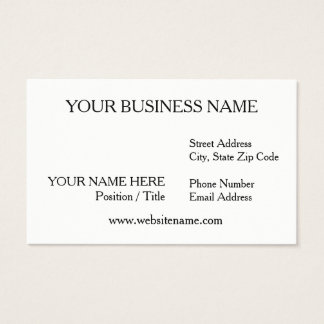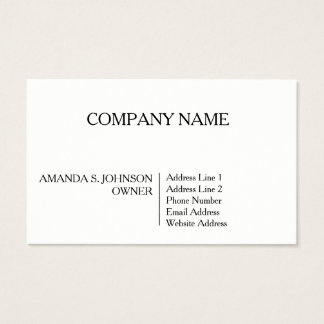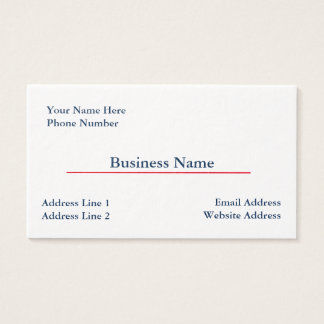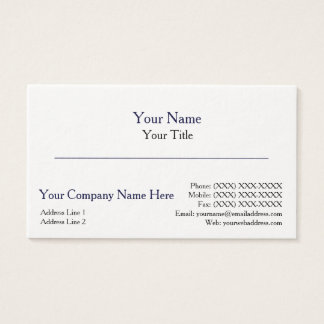And when it comes to reeling in users and converting them, it’s all about the copy. The following are 5 tips for making your copy more effective in driving conversions on your website.
1. Figure out who your audience is
Sales happen when you identify a need and meet it. Effective copy highlights that need and explains why the featured product or service is the best solution. First, though, you need to know who you’re addressing.
To determine who your audience is, try creating several user personas. This means doing some research, finding out what groups of people are using your product, and figuring out what they have in common. Consider some of the following characteristics and how they might apply to your hypothetical customers:
- Socioeconomic status
- Job title and industry
- Marital status
- Age
- Location
Once you determine a few unifying traits among your audience members, you can then create several personas to target. For instance, say you run a company that specializes in high-end crocheted baby blankets and patterns. There are a variety of possible user personas for your products. One might be Daniel, a new millennial father looking for a high-quality blanket for his infant daughter; or Elise, a grandmother and crocheting enthusiast who wants to get her hands on a new pattern for making Christmas gifts.
For this product, it wouldn’t make sense to have a user persona like Roger, current student and president of his university’s Delta Chi chapter; or Lorraine, a stay-at-home mom focused on helping her teenage kids apply to college.
Although fictional, these personas represent your customers and help to humanize the people you’re trying to sell to. And knowing who your audience is makes targeting them easier—you’ll be able to write better copy that’s tailored to their needs and expectations.
2. Be conversational—use “you” and “your”
Which of these statements feels more personal to you?
- When a contractor picks up a widget, he or she needs to trust that it won’t break. Acme Widgets stand up to hard use.
- When you pick up a widget, you need to trust that it won’t break. Acme Widgets won’t let you down.
There is very little difference between the two, except that the second option speaks directly to the reader. And yet, it instantly evokes a closer connection. That’s the power of the second-person point of view—that is, writing “you” and “your.” Addressing your reader directly helps to close the distance between them and their computer screen.
For some inspiration, take a look at Rover, a pet care marketplace for dog and cat owners. To describe its available services, Rover could have simply listed its main offerings: dog boarding, house sitting, dog walking, and so on. However, it goes above and beyond to connect with its audience by including an additional line describing each service.

Image source: Rover
What exactly makes this effective? Just about everyone knows or can at least deduce what services like “dog boarding” and “dog walking” are, but these extra lines of copywriting add a personal touch. Perfect if you need overnight pet care and Whenever your dog needs a walk. By incorporating a second-person point of view, the emphasis is on you, the reader, and meeting you (and your animal’s) needs.
3. Include quantifiable facts
Imagine that you’re developing a new marketing strategy for your B2B company and you’re interviewing different content platforms. The two companies you’re looking at give you the following pitches. Which is more convincing?
Content marketing is an important investment in today’s market.
Content marketing costs up to 41% less than paid search. In addition, after three years, that piece of content will have generated over 300% more leads than paid search.
Chances are you’re much more likely to trust the second company with your business. Why? It includes very specific facts and figures. Facts are convincing because they’re verifiable and concrete. But be careful—you want them to be your support rather than your main message. Too many facts will make your copy sound dry.
4. Emphasize action
Conversion is action. If you want more people to buy, subscribe, or contact you for more information, don’t wait until the call to action to bring it up. Inject action verbs and phrases throughout your copy, particularly those that make the reader envision doing or achieving something.
That doesn’t mean simply describing the product or service in action terms, as in “This widget is the fastest on the market.” It means painting a picture of its use and how it impacts you, such as “With this speedy widget, you’ll produce 30% more doohickeys than the average company.”
Do you see how the second sentence’s use of the verb “produce” inspires action? Other similarly effective verbs include:
- Launch
- Drive
- Create
- Innovate
- Grow
- Explore
For an idea of how action words resonate more vividly with readers, take a look at SpaceX’s About page. Count how many active verbs it contains in its 31-word description.

Image source: SpaceX
Designs, manufactures, launches, revolutionize, enabling, and live—that’s nearly 20% of the text! Not only that, these verbs inspire more awe and admiration than if the copywriter had simply written, “SpaceX makes rockets with the goal of moving people to space.”
By communicating its mission so evocatively, it’s perhaps no surprise that SpaceX has raised over $2.25 billion in venture capital. More lively and active copywriting touches people and stirs them into action.
5. Be simple and concise
You have just seconds to convince a visitor on your website that you’re worth sticking around for—but you won’t accomplish that if your writing is overly long and complex. After all, most web users read 20% of a page’s content and that number tends to vary inversely with the amount of content on a web page. In other words: The more you write, the less people read.
15% Off All Business Cards
VIEW ALL
$44.25
$58.55
$68.95
$65.40
$60.05





Hi, This is (Jason Lava), a wordsmith at heart and an experienced writer by profession. I have been working in a content writing company for the last 6 years and have worked for clients across the globe. I love to know about different types of businesses and serve them with quality content. Reach out to me if you have any type of content requirement.
ReplyDeletecontent writing company